SAMURAI BUILD 2F,
1-29 Katori-cho, Nakamura-ku,
Nagoya, Aichi Prefecture, Japan
ONE DAY IN HIGASHIYAMA DISTRICT: A walking tour in Kyoto’s most picturesque area (Part 2)
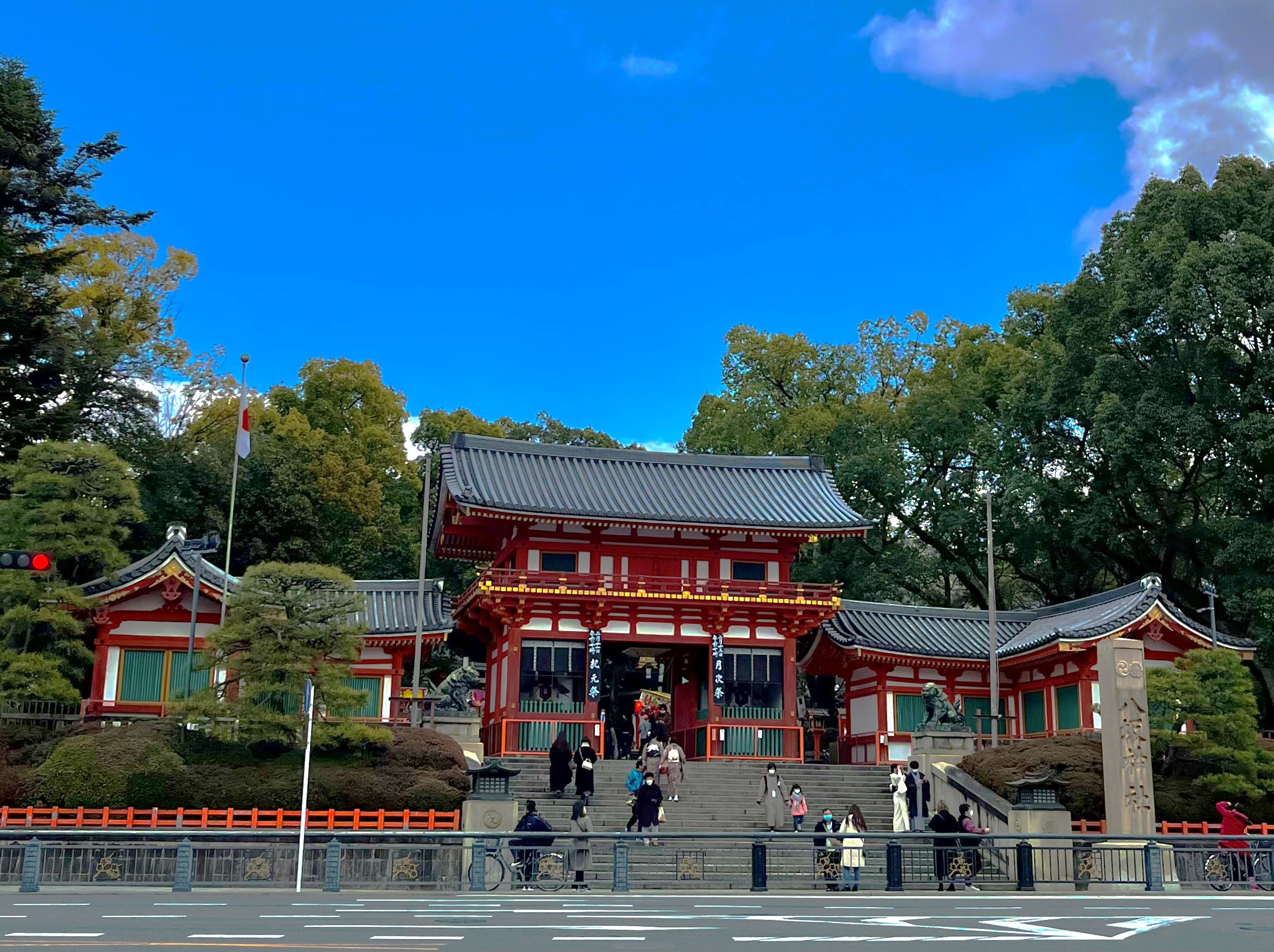
Nene no michi
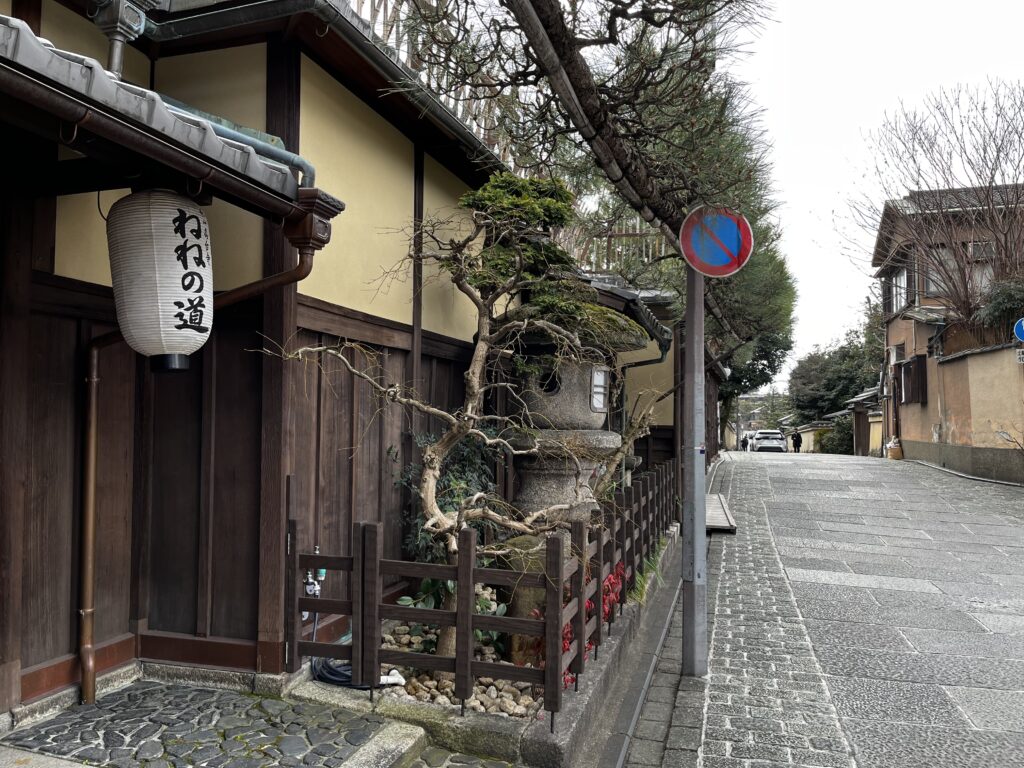
Nene no michi (Path of Nene) is named for the widow of the warlord Toyotomi Hideyoshi, who was known as Nene. It is narrow street that stretches from Sannenzaka to the east side of Maruyama Park in Gion. Even though it is not a pedestrian area, there are always tourists since it is the main path in order to reach Yasaka Shrine from Kiyomizudera, one of the two main sightseeing spots.
If you want to rest, you can enjoy the lively atmosphere of the path by riding a rickshaw. The rickshaw drivers are physically strong and very friendly.
Yasaka Shrine
Yasaka shrine was founded over 1350 years and it was originally called Gion, but, during the Meiji Renewal when there was a distinction between Buddhist shrines and temples, it turned to be Yasaka. From 1871 to 1946 this shrine was designated as a Kanpei-taisha, meaning that it was included in the first rank of government-supported shrines.
Morevoer, Yasaka Shrine is famous all over the world for Gion Matsuri, one of the greatest Festvials in Japan that is held every year in the month of July and for being a popular Hatsumode (first Shrine visit of the new year) spot.
The legend: Susanoo, the protector of humanity and justice

Yasaka Shrine enshrines Susanoo-no-Mikoto, the deity of the sea and storms according to the Japanese mythology.
Susanoo appears in the first part of Kojiki, the ‘Record of Ancient Things’, known to be the oldest book of Japanese history and the oldest text of any kind from Japan.
Susanoo`s parents are the creator of the Japanese Archipelago, Izanami (Godess) and Izanagi (God). Moreover, he is sibling with Amaterasu, the goddess of the sun and Tsukiyomi, the god of the moon. His father told him to rule over the ocean, but instead of obeying him, he started bothering Amaterasu, his sister. One day he frightened her by throwing a skinned horse in the room where she was weaving quietly in her palace. Amaterasu, offended, decided to hide herself in a cave and the world fell into complete darkness and evil spirits were free to wreak havoc throughout the land. After the quarrel, Susanoo was driven out of heaven to Earth because of his outrageous behaviour.
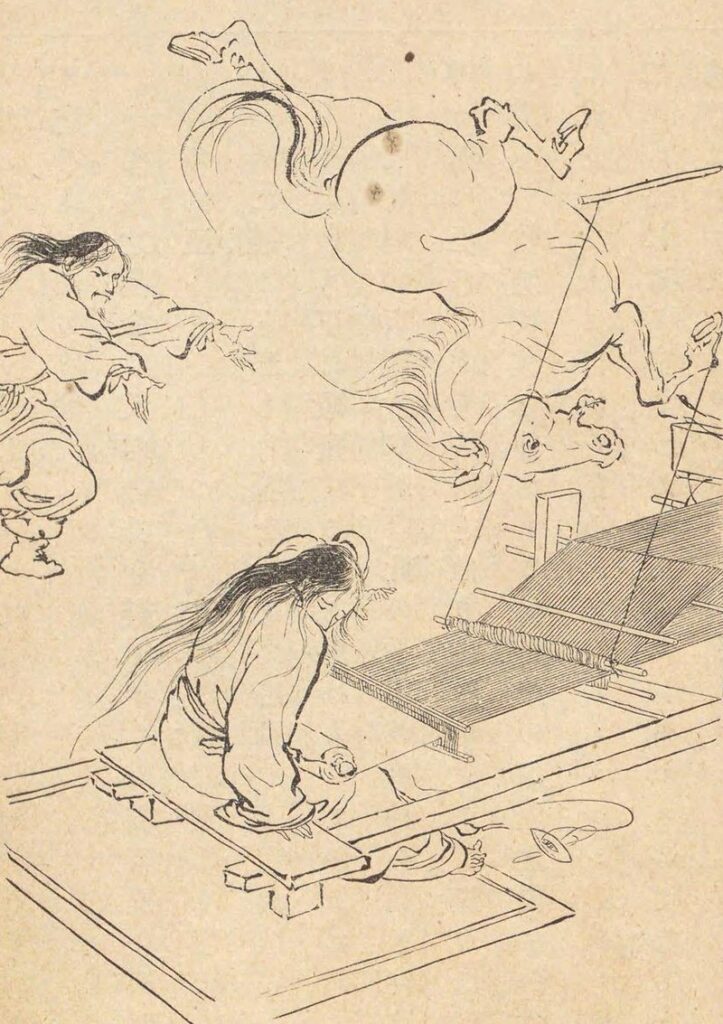
It was there that he changed his behaviour, after saving a maiden from a 8-headed snake called Yamata-no-Orochi, Susanoo became the defender of mankind.
Moreover, when he was cutting with his sword the tails of the monster, he found the sword “Kusanagi-no-Tsurugi” (the Grass Cutting Sword) in one of the tail of the snake. This legendary sword represents nowadays one of three Imperial Regalia of Japan together with the mirror and the jewel. Susanoo did not hold onto the sword for a long time, however, and gave it away to his sister as an apology which allowed him to return to the gods from his exile.
Structure
Yasaka shrine was founded over 1350 years and it was originally called Gion, but, during the Meiji Renewal when there was a distinction between Buddhist shrines and temples, it turned to be Yasaka. From 1871 to 1946 this shrine was designated as a Kanpei-taisha, meaning that it was included in the first rank of government-supported shrines.
The shrine complex include multiple buildings: romon (gate), honden (inner sanctuary), haiden (offering hall) and dance stage bordered with hundreds of lanterns.
The Romon gate is a famous landmark and a popular photo spot for tourists. On both sides of the stone steps there are two Komainu Lion dogs in order to ward off evil spirits.

The bright vermilion 15meter-tall hall combines the Haiden (offering hall) and the Honden (main hall). Its roof is made of hinoki (Japanese cypress) and the architectural style of the building is unique because the roof covers the front shrine as well as the main hall, and this design has become known as Gion-zukuri (Gion construction style).
In front of it stands a dance stage with hundreds of lanterns that get lit in the evenings. In each lantern is written the name a local business in return for a donation.

Gion
Gion District of Kyoto is known for its charming, historic atmosphere and above all for being the most famed Geisha district in the City.
In the case you come from Shijo Street and if you would like to visit Yasaka Shrine, then you will surely walk along the path below. In the background it stands the magnificent Minamiza Theater, a Kabuki theater.
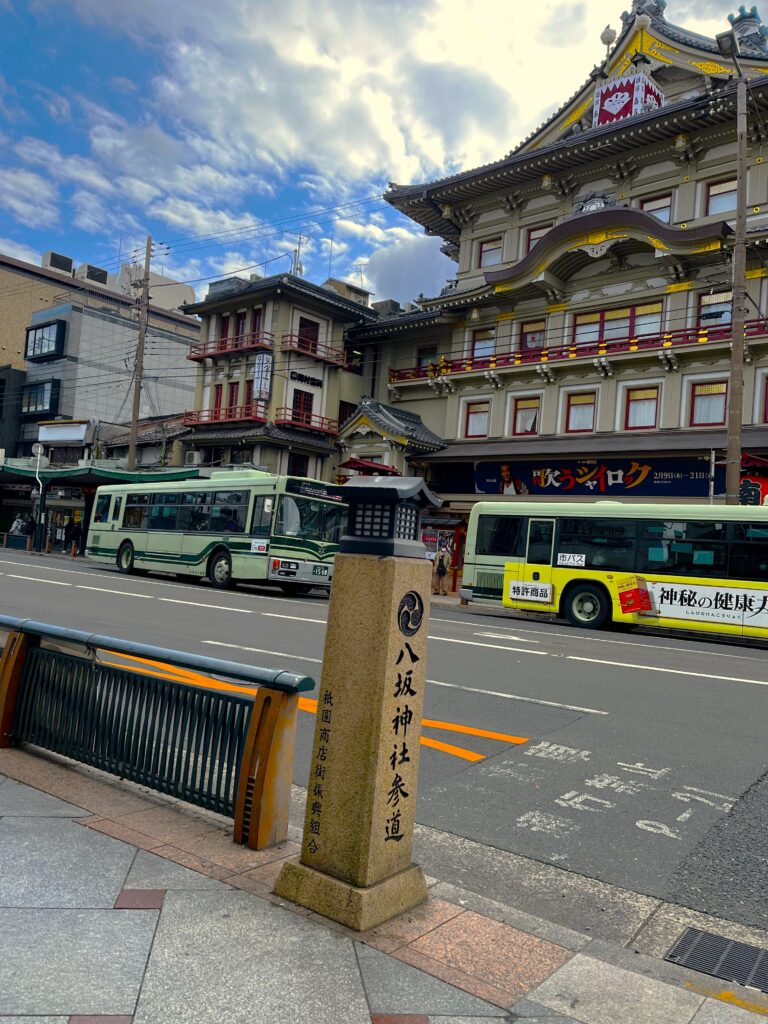
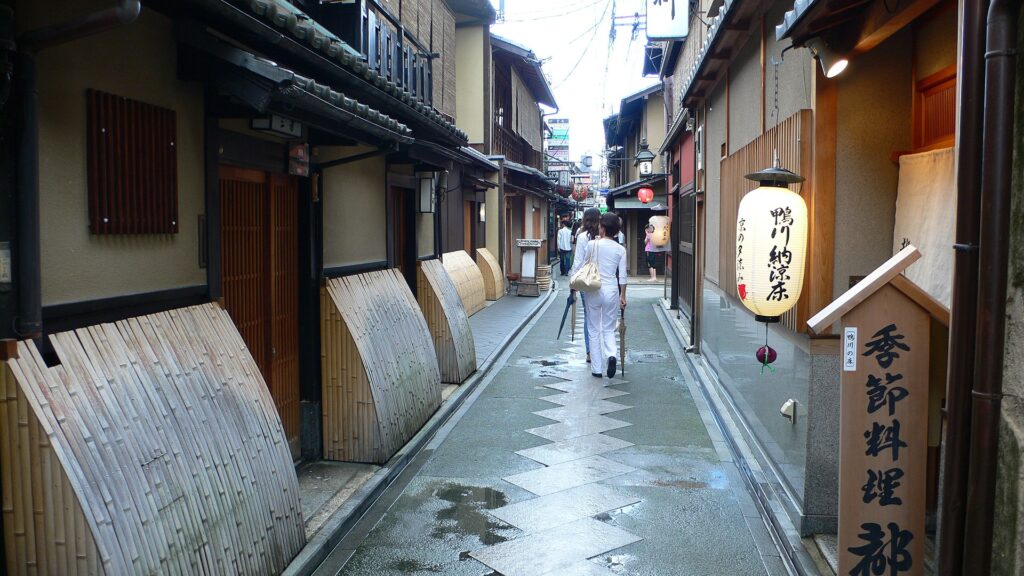
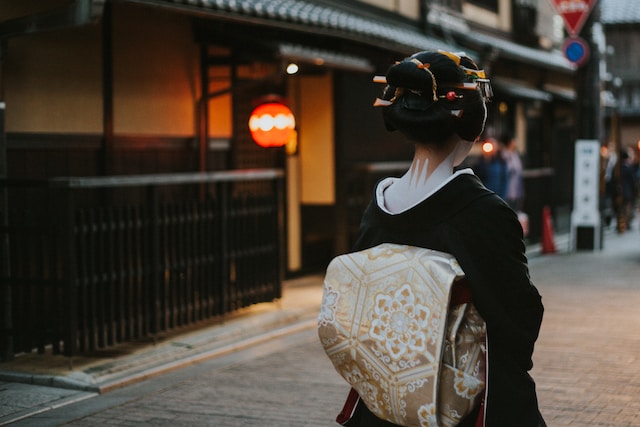
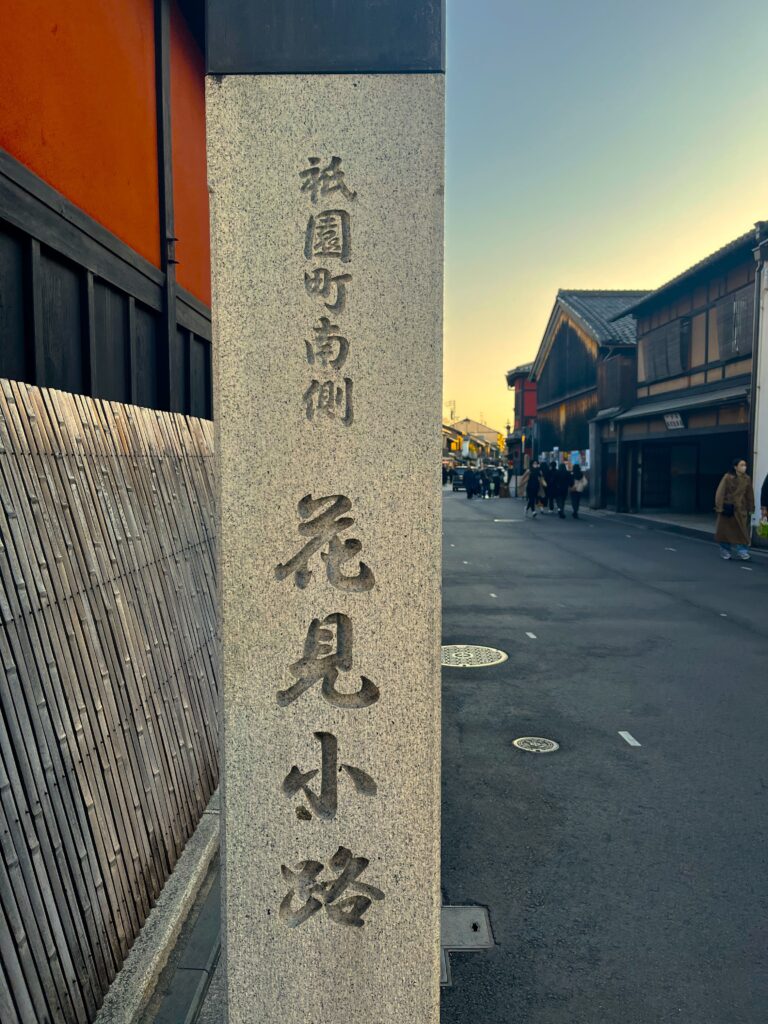
Hanamikoji is well known for its machiya-style wooden houses along the street and if you go there in the evening you may be lucky to catch up a Geisha or a Maiko. Be careful, photography prohibited on private roads!
- category: Kyoto











